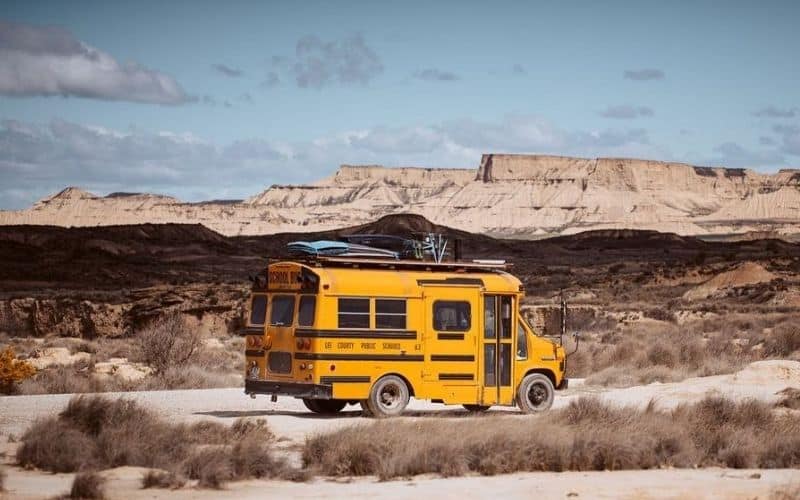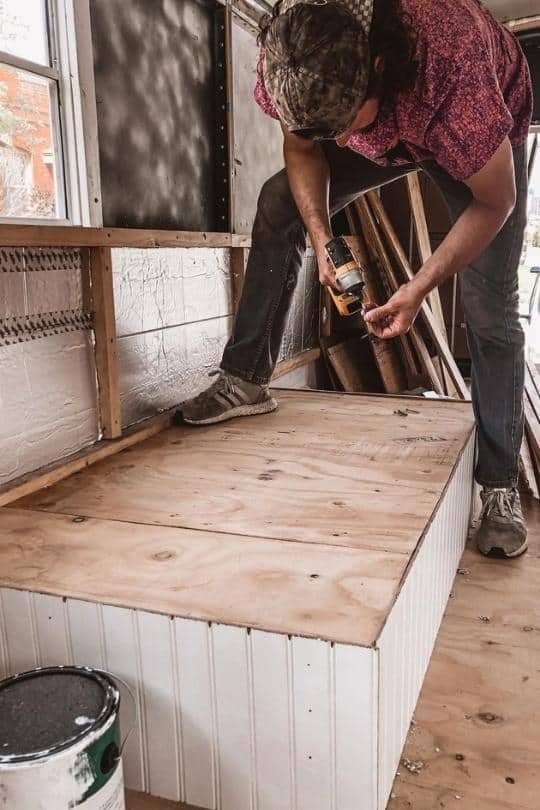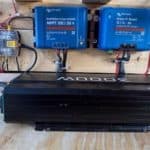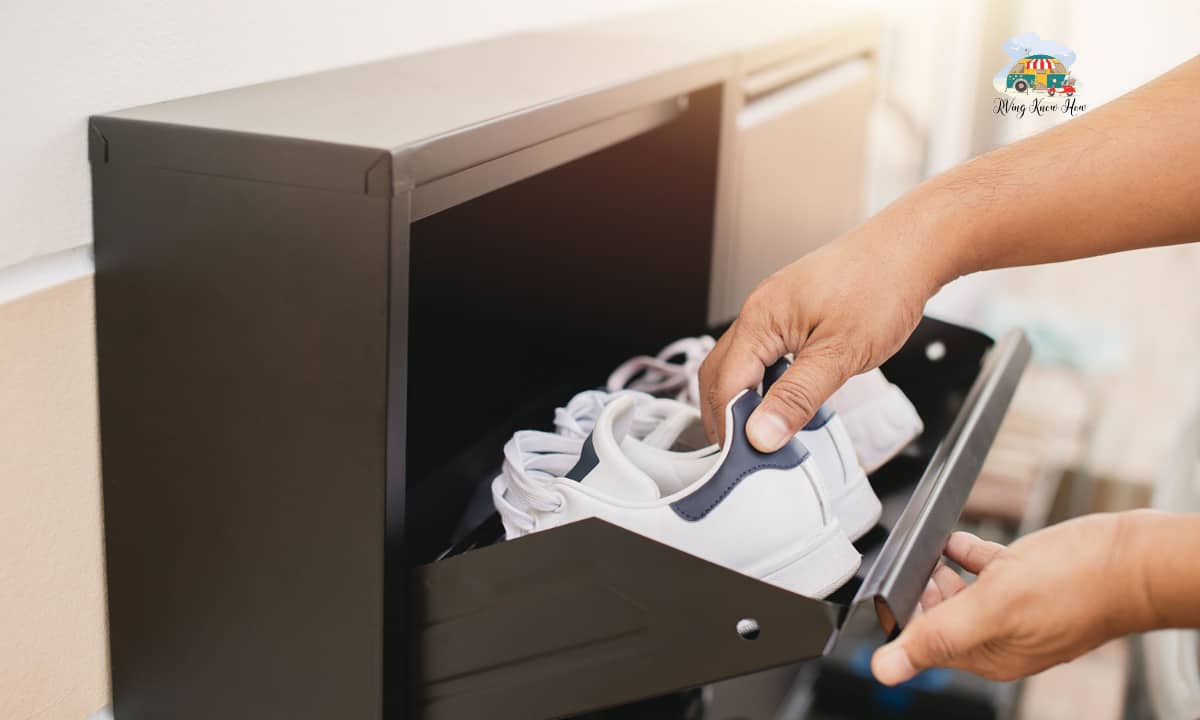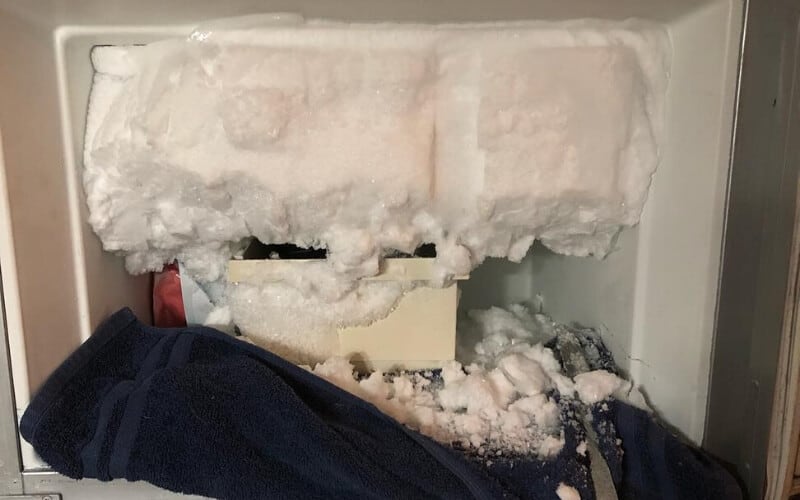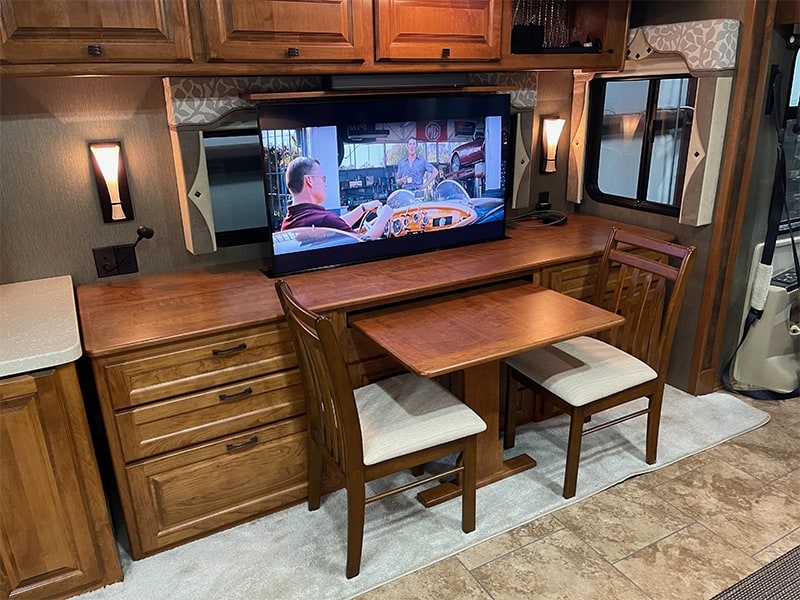The internet may paint a pretty picture of life in a converted school bus, but any RVer knows the reality can get ugly.
Once you start ripping out floorboards, you’ll uncover many challenges vanlife influencers forget to mention.
While skoolies certainly have significant benefits, there are real downsides to taking on a project as large as retrofitting a retired school bus.
Before your dream turns into a money pit, read on to find out the reasons some RVers choose to avoid skoolies.
What is a Skoolie?
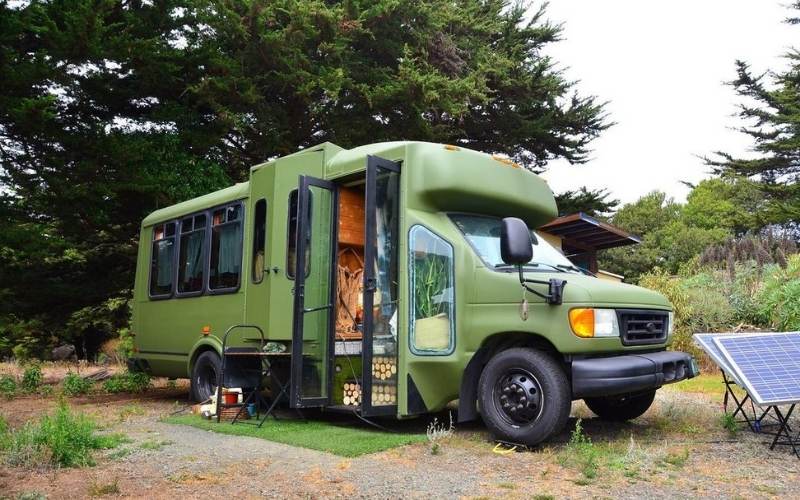
A skoolie is a school bus converted into a tiny home on wheels. DIY RVers acquire these buses from public school districts to gut the interior and renovate the bus, installing kitchens, bathrooms, beds, and insulation.
Ranging anywhere from 20 feet long to upwards of 45 feet, RVers use the ample interior space as an affordable blank canvas for installing amenities included in a standard RV.
How much does a Bus Conversion cost?
Including the cost of the bus, you should budget out at least $30,000 for your bus conversion.
This number considers tools, materials, appliances, and gas from 25 trips to Home Depot.
It does not include hiring any outside labor to deal with plumbing or wiring, which would instantly boost your costs towards $35,000.
The exact cost of your bus conversion is hard to calculate, as in addition to the financial cost, the work requires significant person-hours and several weekends.
Constructing a mobile home is not something you want to rush. If it’s your first conversion, give yourself at least six months to complete the process.
Before we can start converting, we need a bus.
When you’re ready, you can purchase buses prepared for conversion from public online marketplaces or auctions across the U.S. For less than 8,000$.
For a 2006 Shortbus with a Ford E-450 engine, you should expect to pay about 6,000$ before taxes and an extra $1500 for immediate maintenance.
You shouldn’t need to replace the engine or transmission on any bus that costs more than $4,000, but chances are there will be something that needs fixing to get the bus into proper working order.
Every year of constant usage, most skoolies will cost $2,000 annually in maintenance fees and surprise breakdowns.
There is no such thing as a skoolie that doesn’t need any repairs, but if you want a safer bet, buses worth more than $10,000 should be low-mileage products in good condition.
Once the bus is in your driveway, the real fun begins. You’ll learn the layout of your local hardware stores like the back of your hand shopping for insulation, plywood, floorings, and appliances.
Depending on the decisions you make while hooking up electrical systems, A/C, kitchen, and plumbing, you should budget out $15,000 for buying your bus and fixing up the engine and $15,000 for renovating the interior.
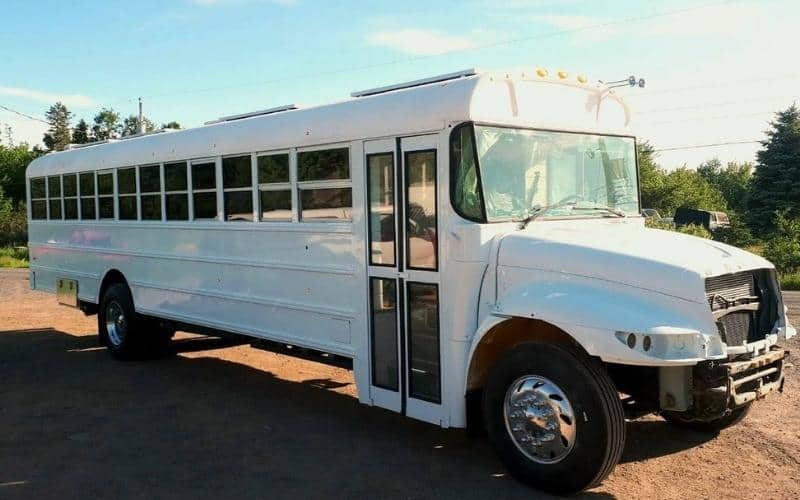
10 Reasons to avoid Skoolie For RV Living
While it seems like an approachable, budget-friendly project to take on, there are several things a skoolie lacks.
Being such a DIY option brings many unforeseen challenges, as it is a unique blend between tiny home and vehicle. Here are 10 cons of living in a skoolie.
1: Skoolies Are Often Old
Most bus conversions are retired school buses. A retired bus means a school district decided the vehicle was incapable of safely delivering children to school.
Whether it’s because of mechanical failure, rust, or high mileage, there is a reason your skoolie is for sale.
If your deal sounds too good to be true, it probably is, and you should never exchange money before having the bus looked at by a professional.
The engines on these vehicles last, but tons of nuts and bolts across your bus have faced years of abuse.
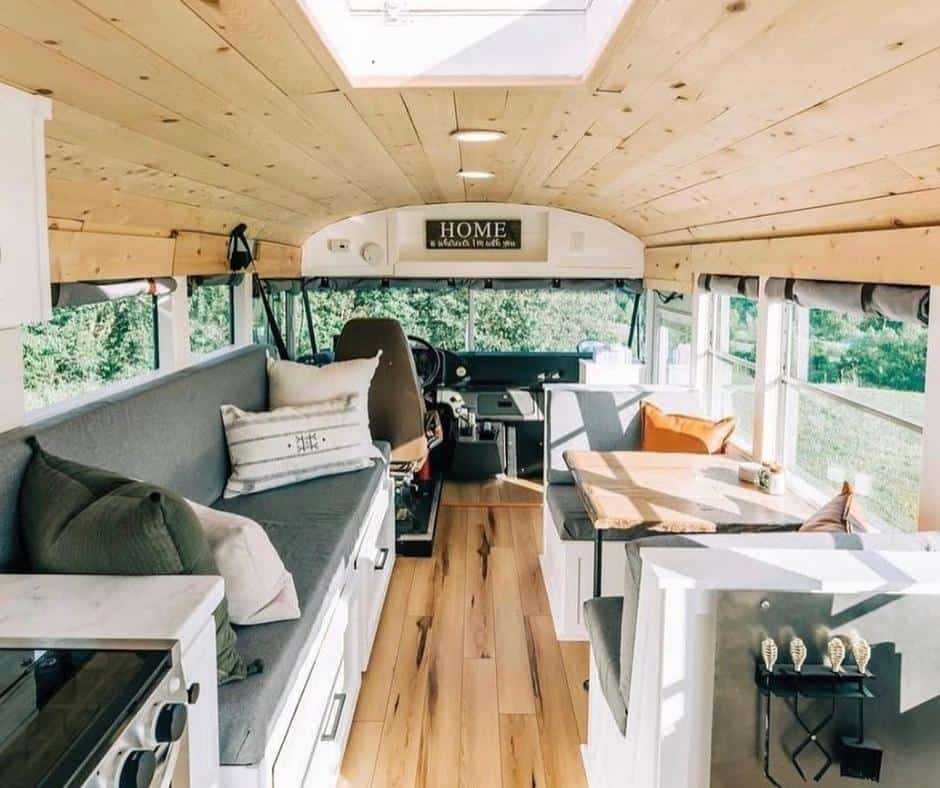
2: Not Designed for Comfort
If you’ve ever had to take the bus to school on a winter day, you’ve felt a special kind of cold.
There is not much more than a thin sheet of metal separating you from the outdoors.
A typical public skoolie will come packed full of single-pane windows and a body without any insulation, heating, or A/C systems. You’ll have to handle uncomfortable temperatures or complex installations.
Engineers didn’t bother adding extra features to make the trip more pleasurable regardless of the weather, as school buses are built for quick trips from home to school.
These buses are for roaming the suburbs, not forest service roads. Owners feel all the bumps of the open road and often notice stiff suspension systems make handling difficult.
3: Slow
Not many kids have to take an interstate highway to get to class on time. The buses can handle neighborhood and town speed limits but won’t reach high speeds.
No matter what kind of weight you’re hauling, the buses have built-in limits that won’t allow you to go past 65 mph.
Any time you head into the mountains, you won’t be able to get near that built-in limit.
Total Skoolie conversions with heavy-duty appliances won’t climb hills at more than ten mph if they can summit at all.
Regardless of your conversion, you’ll have to factor in a few extra hours when driving through any remotely hilly terrain.
4: Getting School Bus Conversion Insurance Is Difficult
Insurance companies don’t love the fact that most bus conversions were done in someone’s garage.
Unless you are a professional electrician, plumber, and carpenter, it’s tough to blame providers for being a bit wary.
These conversions are unproven, and having your entire home on wheels brings a wealth of safety hazards.
Before you can even be considered, you’ll have to prove your vehicle is a certifiable conversion RV and not a school bus.
Once it’s bonafide, titled, and insured as an RV, you’ll shell out about $300 a year for liability.
5: Some RV Parks Don’t Allow Skoolies
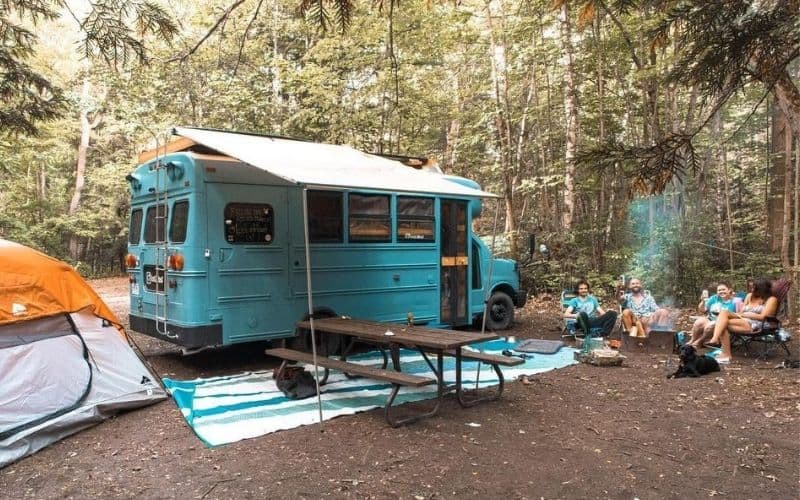
The ugly truth of some RV parks around the country is they have just as many rules as a stuck-up neighborhood association.
RV Parks trying to attract RV mansions that cost over $100,000 can sometimes be a bit too concerned about their appearance.
To look at the part and attracted wealthy RVers, these parks have policies forbidding converted vehicles or RVs more than a few decades old.
Don’t let a few rotten apples spoil your fun. The large majority of parks country-wide welcome RVs of all shapes and sizes.
6: You’ll be Starting From Scratch
While it may sound exciting to have so many personalization options in your house on wheels, the steps necessary to simply get a skoolie livable can be staggering.
These buses have no insulation, wiring, electronics, or storage built-in. Once you’ve stripped away rows of seats, you’ll have to rip apart the entire bus and rebuild it.
7: Not Easy to Park
Even the shortest skoolies are still 20 feet long. That length, coupled with the wide interior, is what makes school buses so attractive to convert, but it also makes it incredibly difficult to fit into a standard parking space.
If you go further and invest in a full-sized bus, you’ll have to go far outside the city limits before finding space to park.
8: Frequent Fill-ups
Public school districts budget $107 in gas per student per year. Skoolies are a thirsty breed of bus, consuming a gallon of gas every six miles.
These diesel-guzzling engines last a lifetime, built to last 350,000-500,000 miles, or 83,333 tanks of gas! Driving and living full time in your skoolie conversion could cost upwards of $4,000 in gas alone each year.
9: Not easy to Make Repairs
You can’t expect to tow your school bus into any small town shop and have meaningful repairs done without ordering some parts.
Along with complex components, You’ll need to find specialized mechanics who are willing to look at the complicated inner workings of the buses, and they won’t be cheap.
The older your bus is, the more complicated its parts will be to come by. Even something as simple as a spare tire will quickly cost more than $500 per tire.
The only guarantee is that surprise repair bills will appear somewhere along the road when it comes to van life, so budgeting out time and money for breakdowns is a necessary part of living in a skoolie.
10: Not Designed to Hold Weight
Weight might not be the first thing you think about when it comes time to layout your conversion plans, but too much load will make itself known as soon as you head out of the driveway.
School buses support a high school football team spread out across both axles, so they can handle some weight.
However, If you load up your entire kitchen and plumbing system unevenly, your drivetrain can’t take it.
Constantly look for ways to balance out the weight in your skoolie and shed a few pounds wherever necessary. If you want granite countertops, you may have to look elsewhere.
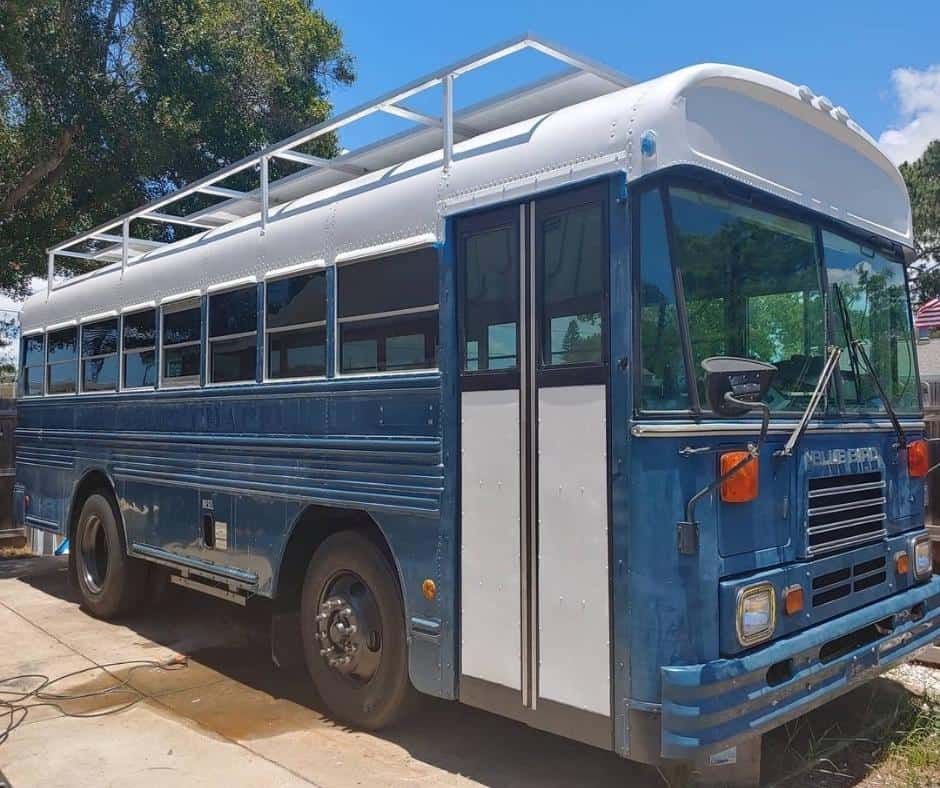
Think Twice Before you Buy
There are tons of benefits to driving a retired and retrofitted school bus, but the task won’t be easy.
Spend hours reading through the research and mapping out your game plan before the bus is in your driveway so you can have the confidence you need to make the right decision.
When it comes down to it, the main reasons to avoid skoolies & bus conversions are time and money. If you’ve got plenty of both laying around, you’re in top shape.
Once things get started, accept the fact that your bus conversion won’t go quite as planned.
These reasons to avoid a skoolie don’t necessarily mean building out a bus isn’t a bad idea, but are serious limiting factors.
With research, you can have all the information available and make the right decision about your dream home.

